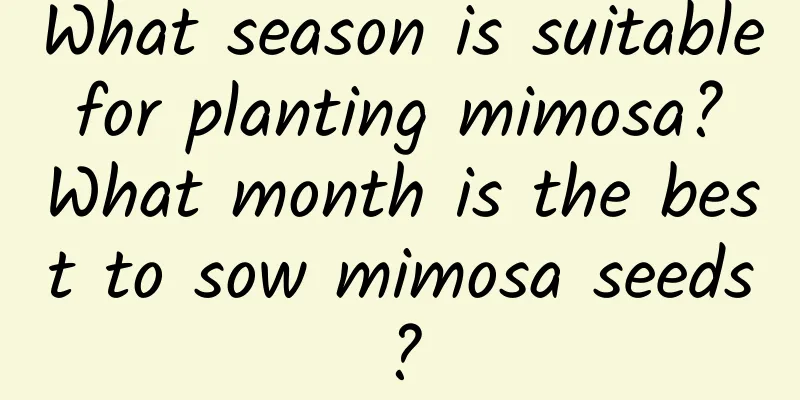How to grow chrysanthemums in spring

1. Time to leave the roomThe temperature in early spring is quite changeable. If you move plants outdoors too early, they are prone to wind damage and frost damage. Therefore, the time to move plants outdoors is generally between Qingming and Lixia. To prevent it from being unable to cope with being suddenly moved outdoors, you can take appropriate measures such as increasing ventilation and enhancing light intensity. 2. Replace the potting soilPlants growing in limited soil are prone to nutrient deficiencies, and they need to change the soil and apply fertilizer to supplement the missing nutrients and improve their nutritional conditions. The climate in spring is relatively mild, which is very suitable for repotting plants. The best loam to use is deep, loose, sandy soil rich in humus and with good drainage. 3. Fertilization techniquesIn spring, plants are most afraid of excessive fertilization. Whether it is seedlings or chrysanthemums that have just survived the winter, their root systems are relatively fragile. If organic flower fertilizers that are not fully decomposed or the fertilizer concentration is very high are used, the roots can easily be burned. Therefore, in spring, the well-rotted liquid fertilizer should be fully diluted before application, and the amount used each time should be controlled, so that the amount of fertilizer applied is small but applied frequently. 4. Pruning branchesThere are three types of chrysanthemum pruning: thinning, pruning and pinching. Thinning is mainly aimed at overly lush branches. Properly cutting off too dense branches can ensure that the flowers receive enough light, which is beneficial to their later growth. Shortening is to shorten overly long branches to reduce excessive loss of nutrients while stabilizing the center of gravity and preventing the plant from falling over. Pinching is to prevent the plant from only increasing in height without growing side branches, which is not conducive to the formation of flowers in the later stage. |
>>: How to water blue chrysanthemum
Recommend
What are the benefits of watering flowers with laundry detergent? What are the effects of watering flowers with laundry detergent on plants?
The benefits of using laundry detergent to water ...
Caterpillars grew in her flowerpot, but they came back to life by pinching off some branches, and the entire pot was full in one month!
What does white sandalwood look like? Some people...
Lipstick flower cultivation methods and precautions
Soil selection for lipstick flower Lipstick flowe...
Which month is suitable for planting cotton?
When is cotton planted? Cotton is usually planted...
Can broad bean husks be used as fertilizer?
Broad bean skins as fertilizer Broad bean skins c...
Can Philippine oil fruit be potted?
Can Philippine oil fruit be potted? The Philippin...
Remedies for Camellia Leaf Falling Off
1. Reasons for leaf drop 1. Watering: Camellia is...
How to grow snow claw succulent
Snow Claw Succulent Growing Conditions When carin...
Camellia cultivation methods and precautions
Camellia is deeply loved by people for its evergr...
How to solve the problem of yellowing leaves of Dendrobium
Solution Method 1 A humid and semi-shady environm...
On haze days, these 20 plants are best to put at home
Rubber Tree The leaves of rubber trees are large ...
How to breed Phoenix succulent and what to pay attention to
Phoenix succulent breeding method There are three...
When should peach blossoms be repotted? What kind of soil is best for peach blossoms?
1. Time to change pots Peach blossom repotting is...
How to grow hydrangea
Hydrangea Growing Conditions Hydrangea prefers wa...
How to grow feather maple
Feather Maple Growing Conditions Feather maple li...









